Activity Stream
Posts Activity Stream
-
-
Either Performance Products has the mold or Brett has the source for the Airdale cowls - somewhere in the posts earlier, I thought it was mentioned......Just need to verify and get a price.
The Pursang was the prototype - There were 5 Airdale kits made initially, so there has to be a cowl mold somewhere. Steve W. may know something about this? John Larson may know?
EDMO
-
Is this what Ed is referring to re: cowls?
John told me that he used parts of three different cowlings graphed together to make this one. I could always make a mold of it if there was a need to have cowlings for sale.
The reason I put the black paint on the front/bottom of the cowling is to make it look slimmer and somewhat longer. I think it creates a nice illusion of a thinner nose, which I like.
-
Ed are you saying there is already a good source for the cowlings?
Mark, that might be a good idea. I know I read one thread about him wanting to supply some parts, guess I need to contact him.
ChrisB, not sure if I missed something about cowlings too?
-
Paint: It can weigh a lot. More colors and fancier = more weight. Single thin solid color with simple striping is good looking and light. Just my opinion.
Cowls: What's this about cowls? I'm very interested in anything going on this subject. I must have missed a post or thread. Please fill me in or point me to the posts!
Thanks!
-
Possibly more than just cowls? Kenneth, make a deal with Trackwelder (Eric) to get some jigs and tooling together!
Mark
-
Is the seller of this kit on this group?
http://www.barnstormers.com/classified_861701_Avid+Flyer+MK1V+Heavy+Haul+kit.html
-
Joey:
beyond the typical steps to setup and adjust the rigging I'd check 3 thing:
That your inboard and outboard flap attach brackets are at the exact 50 deg. as specified in the manual.
That your f7a's are exact mirror images of each other.I bolted mine together at the main pivot piont and found they weren't.
That the bell cranks on the ends of each flap are at the same angle when the flaps are at the same angle.
Been a while since I did this to my plane but the most critical part is to get the plane all leveled out and then to get the teeter tottter that the f7's bolt to absolutely level and keep it level.Always use a level in the same direction don't flip it end for end between checks or uses.
My best guesses for success...
Mike
1 person likes this -
-
John told me that he used parts of three different cowlings graphed together to make this one. I could always make a mold of it if there was a need to have cowlings for sale.
The reason I put the black paint on the front/bottom of the cowling is to make it look slimmer and somewhat longer. I think it creates a nice illusion of a thinner nose, which I like.
-
-
When the first Texas Taildraggers were made from the 150, one outfit left the nose wheel on for transition pilots - until they got lighter on the brakes, and could keep the tail down.
EDMO
-
Congratulations, Ken!
We are all waiting on the pilot report and lots of video/photos of everything!
1 person likes this -
Well the deposit/down payment check is in the mail to John today. One step closer to brining the Pursang home to a new owner!
Now lets hope that the weather cooperates in February to fly it over 1500 miles!
-
I saw Airdale #1 cowl for the EA-81 engine before it was painted - it was extended for the engine, and the lower portion extended to match the lowered floor of the plane. Looked good - I may want one.
EDMO
-
The plane has an interesting profile. Very unique. I can't place the cowl shape, kind of like an early Cessna 205 or 210, with their "chin bump".
It's very sad to me that this plane never caught on, or maybe better, that this design was too mismanaged by subsequent leadership to survive.
Please don't be shy about writing all you can about the plane, it's design and it's character.
-
-
Although costly, I like the Air Force decals on the top and bottom of a wing - Nothing stands out better than a blue circle with a star in it - maybe a red dot too.
Your paint scheme looks great, IMO.
I would like to have a good paint job too - hope you are available - my old lungs cant take much abuse!
EDMO
-
Played around with it some more. Yes you are correct about it being too much and I don't want to do this to an airplane that I will likely have to recover in a couple years. So here is what I think will happen next month just to spruce it up a little. I already have the paint as well so it's a not cost solution to making it look better.
If I find some yellow I MIGHT add a trim line around the black stripes just for accent, but that's only if I have time, the weather cooperates and I find the yellow in the paint stock room.
-
Randy,
That 150 is owned by a friend of mine. That is in the paint booth after fresh paint two months ago. He does a crazy job on every plane he has owned, it almost always goes through paint, interior and avionics, then new engine, basically they are brand new when he's done with them. He seems to have a hard time keeping them though, about a year is as long as I've seen him keep a plane. Not sure if he gets bored or just wants a new toy. He sells them and starts over. This one I picked up as a ratty nose dragger in New York for him just over a year ago. It's undergone a HUGE change....see picture.
My experience with the tail dragger 150 is limited but I've flown two cross country trips in two different 1959 models. Both were VERY well done. I actually saw no bad habits at all and thought they were one of the easiest tail draggers I've ever flown. No bad habits at all, and on several landings I had some decent crosswind to contend with. With the 8.50x6" tires on this one it landed like a dream, so very smooth, but got to love that bounce as you taxi with a tire that isn't quite round! The last landing I did with this one was at night and I decided to go for a full wheel landing in the dark...still smooth as glass! I have time in Waco aircraft and they are a complete handful, especially since IMHO they don't have near enough rudder surface and run out of rudder with even a 15 knot crosswind, plus they feel very short coupled and like to dart a little on landing due to the way the gear and shock absorption works (doesn't work sometimes).
Once I fly the Pursang I will definitely report on it's characteristics. I'll be posting up more about plans for it as I do this long cross country with it in the next few weeks. I plan to make changes along the route, but that's a totally different thread!
-
Kenneth,
That's great, almost a congrats on the new ownership then.
That's a good looking 150 TD. Everyone I have talked to about them says they are a handful on ground handling. What is your experience in that respect and let us know how they compare to the Pursang.
-
Nooks like a neat place. Is that a private strip or public land? it is sure well developed and manicured.
-
Thanks for the ideas; a lot of ways to get there like you said. Weight; yes, planning to pull all the insulation from my floor area and just leave it on the firewall, also the aluminum heel plates. Thinking about pulling the plywood floor and putting in carbon fiber foam core board but that is a lot of $/lb. Still thinking of changing to a LI battery and moving it to the firewall and pulling out all the cable to the rear battery location. Maybe drill some lightening holes in my landing gear steps. Am adding some wing area with the extended wings and reducing the washout will help some but extended wings, increased spar stiffners and larger lift struts will add weight as well as the slats. Only trying it will tell for sure. Fowler flaps are impressive but are well beyond the level of modifications that I want to do.
On the banking /turning; my understanding is the turning adds angular acceleration and increases the felt load on the wing from the added centrifigal force. The banking causes the lift vector acting perpendicular to the wing to be at an angle off of vertical so the vertical component of the lift vector is reduced. All other factors being constant; I have not experienced any increase in stall speed as angle of attack is increased. I had not thought that the wing angle of incidence was changing the vertical lift vector. Better ask Barnaby W.
-
I like the method that Jim describes. I spent a lot of time working to set my flaperons but FIRST set the wing adjustment. I adjusted the joint so the wing angle was the same on both wings at the lift strut attach points. The wings were not perfect at the tips but the attach point seemed to be the best point to make them the same on average
I used a cheap weighted angle finder to set the adjustments of my flaperons and probably should have tried clamping the sticks vertical (plumb) to save a lot of checking and rechecking. Then set the flaperons at the same reflex angle with stick plumb, no flaps, measuring the flat bottom at the same point about midway on both flaperons, then with full flaps at 26 degrees, and then to balance the deflection at full throw of the stick right and left (but could not get this closer than a few degrees). I probably worked on this 3 or 4 days (at least) so I like the method Jim describes; it looks faster and more accurate with a lot less checking and rechecking. I think it was worth it though, mine flies hands off with only rudder input. Probably should put a small tab on the rudder to fly "feet off" .
-
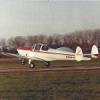
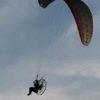

.jpg.4b33961872f0355d5e844f76433b74f3.thumb.jpg.9e3553a256b702f9ca668642dbf33570.jpg)
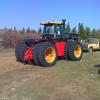

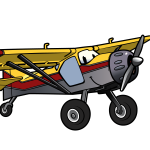
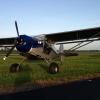



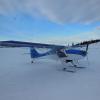
AIRDALE COWLS?
in Avidfoxflyers General Hangar
EDMO
Posted · Edited by Ed In Missouri
starting new thread - continuing from "paint ideas", to try to make it more noticeable:
Who to ask about the availability and cost of Airdale Cowls -
John Larson? Steve W.? Performance Products?
Who has the mold for this cowl?
John's Pursang was the prototype for the Airdale - There were 5 Airdale kits made initially -
There must have been a mold for the cowl.
Who was "Dale", as in Air-Dale? Where is he now? What does he know?
What can Brett tell us - if anyone can get thru to him?
David Goode once told me who Dale was, but that was many years ago, and I have forgotten.
Maybe someone has the answers to these questions.
EDMO